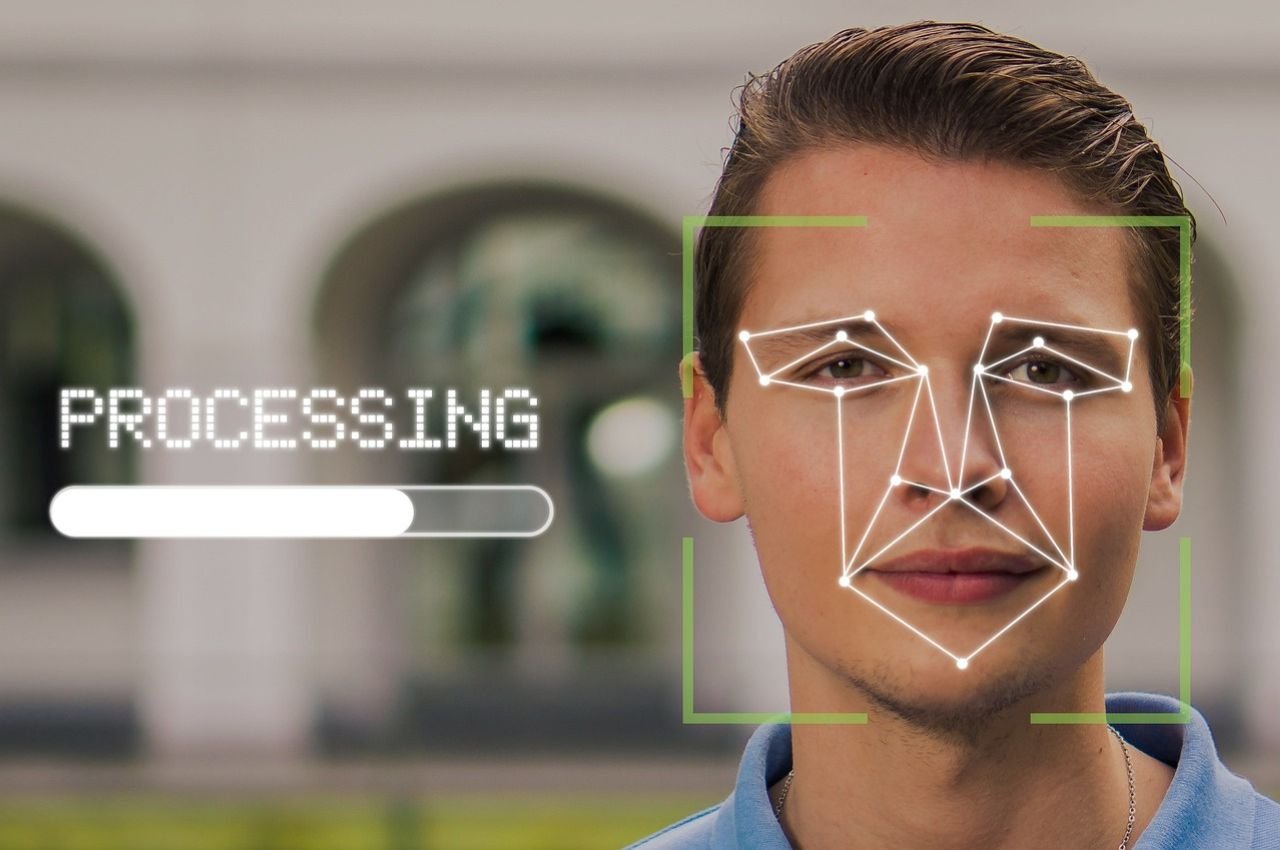As technology advances the rate of crimes, numerous cases of identity thefts and deepfakes have been uncovered this year. According to recent research, deepfake identity theft cases skyrocketed between 2022 and 2023. The number of attempts varied by region, with the Philippines experiencing a staggering 4,500% increase year-over-year. This highlights the stringent need for facial recognition technology in different industry sectors to optimize security.
This article will examine the basics of face recognition technology, the mechanisms behind its operation, and the reasons for its importance.. It will also discuss the use cases of face recognition and its benefits in securing the system.
What is Facial Recognition Technology?
Facial Recognition Technology is a biometric tool that utilizes artificial intelligence to identify or verify people based on their facial features.It examines particular traits such as the space between the eyes, the shape of the nose, and the structure of the jaw. It creates a unique digital template for each face.
The technology is widely used for identity verification in personal devices, security systems, and public spaces. Unlike other biometrics, face recognition works from a distance. It also allows seamless and contactless identification. This advancement has led to widespread use. It also raises questions about both its convenience and privacy implications.
How Does AI Facial Recognition Technology Work?
AI Facial Recognition Technology relies on machine learning and deep learning algorithms to analyze and match faces in real time. The process has three main steps:
1. Detection: Find faces in an image or video.
2. Analysis: Measure key facial features and create a unique template.
3. Recognition/Verification: Compare the template to stored facial data to identify or confirm the person.
Advanced AI models improve accuracy by continuously learning from data. It allows them to recognize people even with variations in lighting, angles, or expressions. This technology is being utilized increasingly in areas such as security, law enforcement, and systems for access control.
Why is Biometric Facial Recognition Technology Important?
Biometric facial recognition technology provides a strong level of security and ease of use.. It enhances authentication processes by eliminating passwords and PINs, making it a popular choice for mobile devices and secure facilities. Its contactless feature is particularly significant in today’s context, where cleanliness and ease of use are paramount.
For organizations, facial recognition streamlines user access, protects data, and reduces risks associated with unauthorized access. Furthermore, it’s a valuable tool in law enforcement, where rapid identification can support public safety initiatives. The significance of this technology keeps increasing as the need for security becomes more sophisticated.
Who Uses Face Recognition Technology?
Face Recognition Technology is widely adopted across various sectors for diverse applications:
- Government and Law Enforcement: Used for surveillance, criminal identification, and border control.
- Corporate and Financial Institutions: Employed for secure access control and fraud prevention.
- Healthcare: Applied for patient identification and streamlining medical records.
- Retail and Hospitality: Enhances customer experiences by personalizing services.
- Mobile and Device Manufacturers: Integrated for secure unlocking and app authentication.
This broad adoption highlights the versatility of facial recognition, appealing to industries that prioritize security, efficiency, and personalization in their services.
Benefits of Facial Recognition Technology in Daily Life
Facial recognition technology has quickly integrated into everyday life, offering a range of benefits that enhance security, convenience, and personalization across various settings. Here are some key advantages:
- Enhanced Security: Facial recognition technology strengthens security measures in workplaces, public venues, and transportation systems, helping identify potential threats quickly.
- Convenient Authentication: It simplifies login processes for devices and apps, eliminating the need for passwords or codes, which improves user experience and reduces password fatigue.
- Streamlined Payments: Facial recognition enables secure, hands-free payment options, allowing for faster transactions and reducing dependency on physical wallets.
- Personalized Services: Businesses use facial recognition to personalize customer experiences, from tailored shopping recommendations to streamlined check-ins at hotels or events.
- Reduced Crime Rates: Law enforcement uses facial recognition to identify suspects in public spaces, aiding in crime prevention and faster suspect identification.
Concerns Regarding Security And Privacy Related To AI Facial Recognition
Facial recognition technology powered by AI raises considerable concerns regarding privacy. The technology’s ability to track individuals in public spaces raises questions about personal data rights and surveillance. Critics argue that, without strict regulation, it can be misused for intrusive monitoring. Risks regarding FRT include data breaches, racial bias, and wrongful identifications in criminal investigations. There is also concern over data storage, as companies must secure facial templates to protect users’ privacy. To address these issues, governments and organizations are developing guidelines to ensure ethical usage and to balance innovation with respect for personal privacy and civil liberties.
Wrapping up with the Outlook on Facial Recognition Technology
The future of Facial Recognition Technology is yet to be for further innovation and broader acceptance. Emerging advancements focus on improving accuracy, speed, and reliability with AI models adapting to changing facial features. Integration with other biometrics, like voice or fingerprint recognition, may create multi-layered security systems.
Additionally, research into privacy-preserving techniques aims to secure data without compromising performance. Face recognition may enable more seamless and secure customer interactions in the banking, healthcare, and retail sectors. With the progress of technology, its uses are expected to broaden. This will result in both opportunities and new regulatory hurdles.



